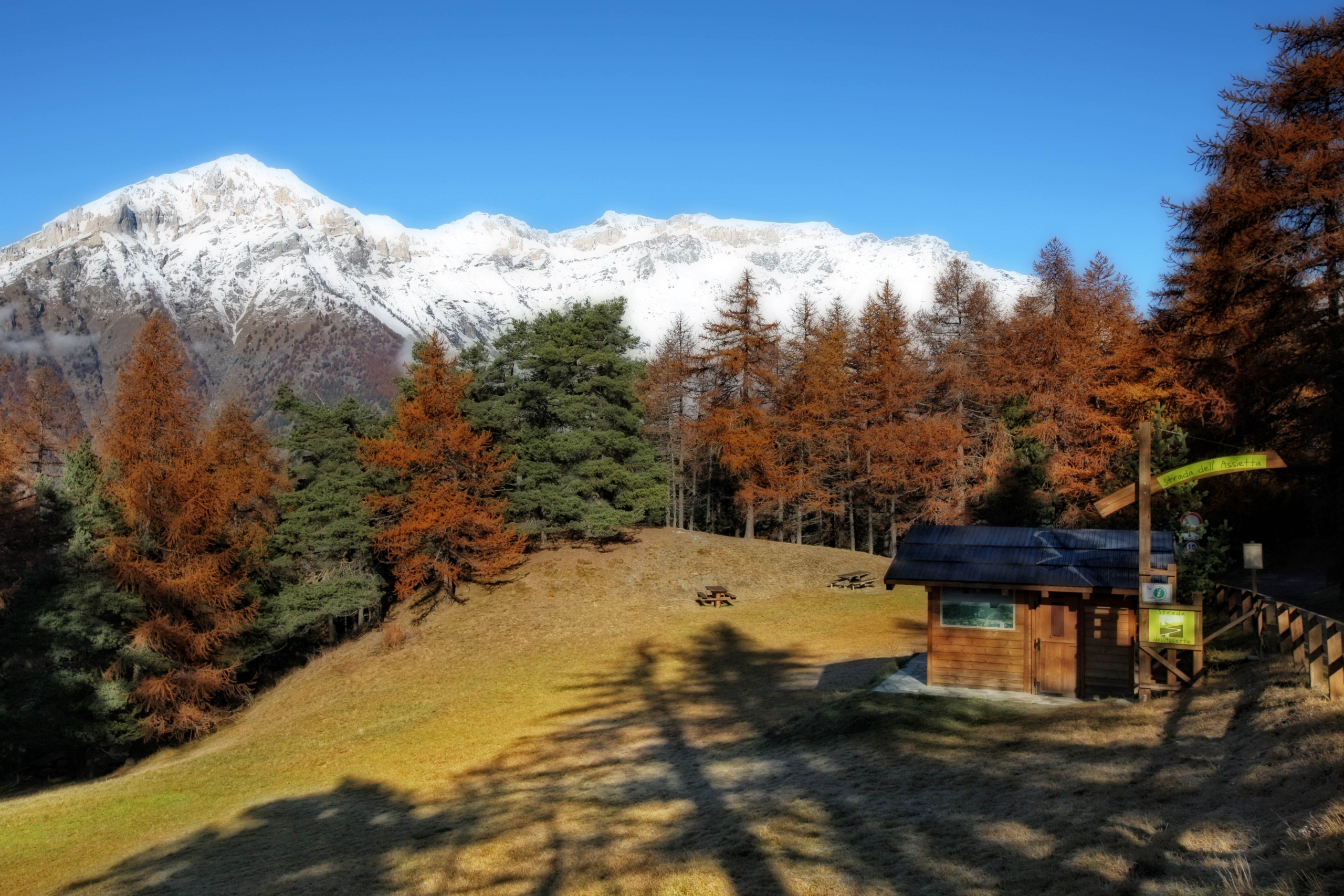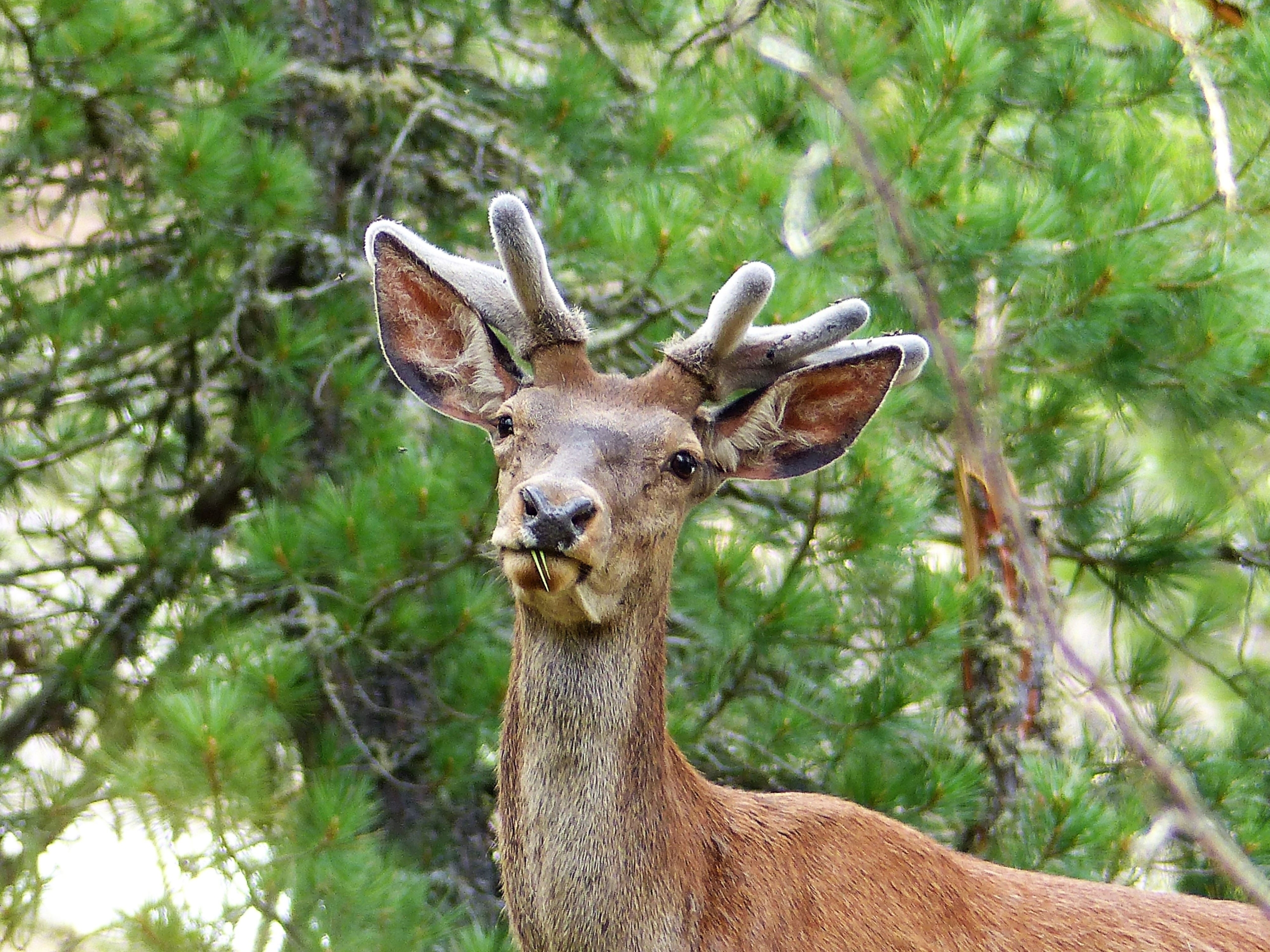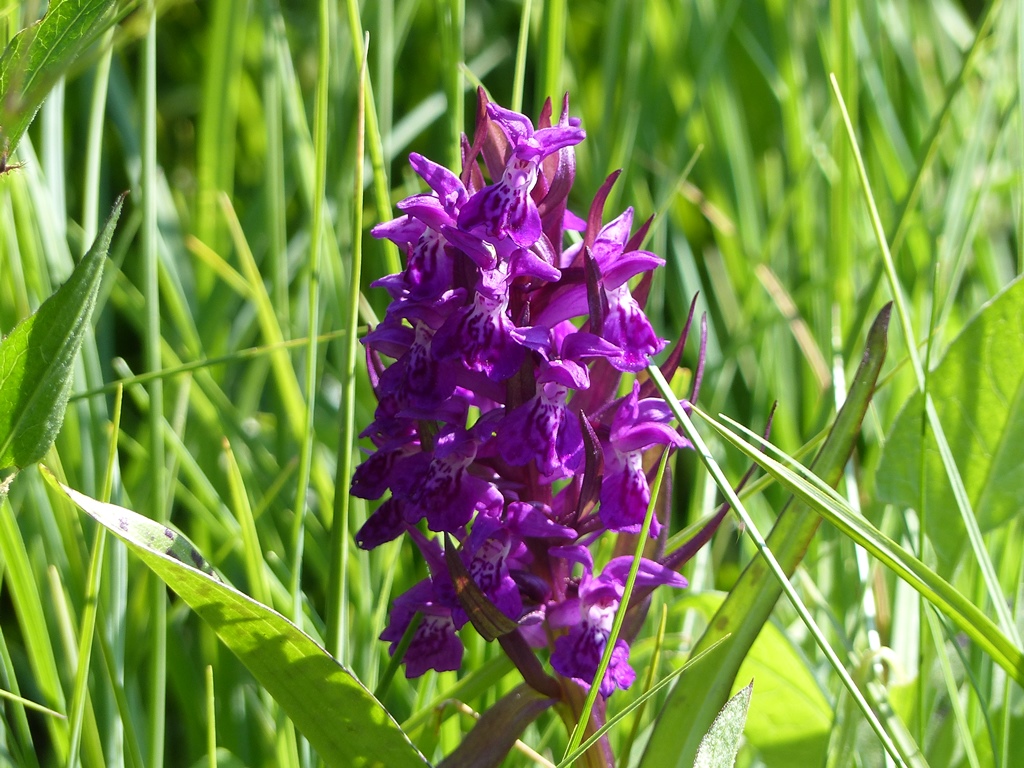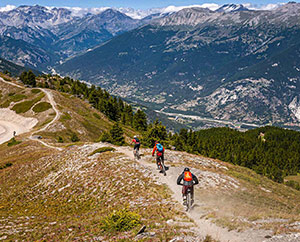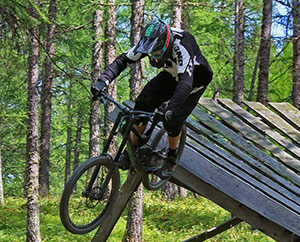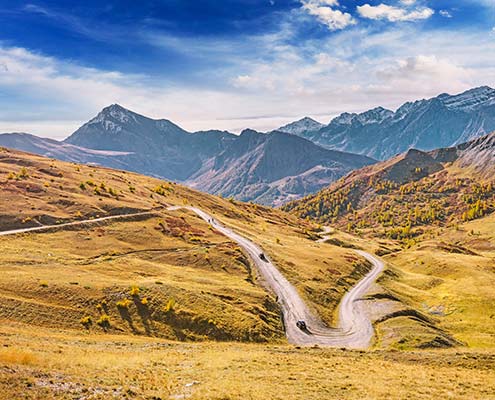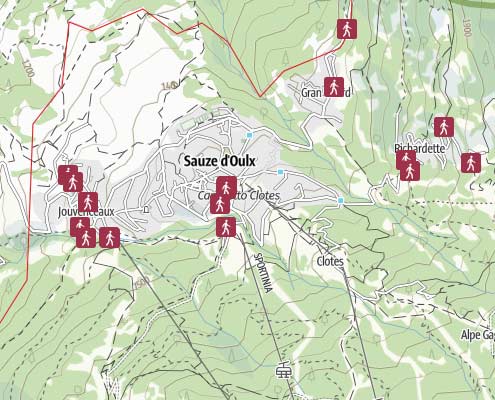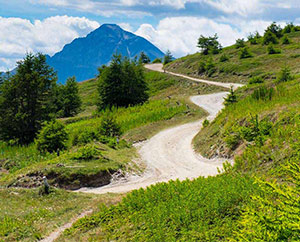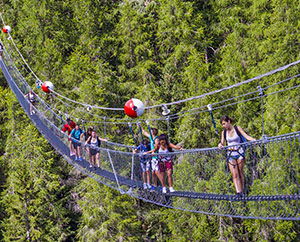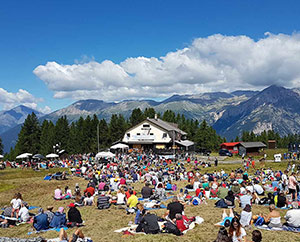RISORSE NATURALI E PAESAGGISTICHE
Sauze d’Oulx è circondata da fitti boschi caratterizzati in prevalenza da larici che, essendo l’unica conifera alpina caducifoglia, in autunno si colorano di tutte le tonalità del giallo creando pregevoli effetti cromatici a contrasto con le cime innevate.
La parte orientale del territorio è invece occupata da un’ampia foresta mista di abete bianco e abete rosso, praticamente unica nell’area alpina piemontese: il Parco Naturale del Gran Bosco di Salbertrand.
Un altro bellissimo scorcio di Sauze d’Oulx è il Lago Laune, a quota 2.043 m, raggiungibile in ogni stagione dalla Ex Stazione Sperimentale Alpina: si tratta di una piccola conca di origine glaciale, alimentata da una sorgente che ricava acqua da falde circostanti.
Nel periodo estivo merita la visita il suggestivo Lago Nero, poco sopra Sportinia a 2.350 m: anch’esso di origine glaciale, il suo nome deriva presumibilmente dal colore delle acque, rese scure dal fondo melmoso, o come racconta qualcuno dall’intorbidamento provocato dalle mucche che vi si abbeveravano.
Tra le risorse naturali si evidenzia l’oasi faunistica tra Sportinia e Pian della Rocca, zona di nidificazione del gallo forcello (Tetrao tetrix tetrix), uccello simbolo delle nostre montagne e inserito anche nell’elenco delle specie avicole piemontesi.
PARCO NATURALE DEL GRAN BOSCO DI SALBERTRAND
Il Parco Naturale del Gran Bosco è un’area protetta ideale per escursioni a piedi, in bicicletta o, nel periodo invernale, per camminate con le ciaspole immersi nella natura incontaminata.
Il Parco del Gran Bosco si estende sulla destra della Val di Susa (Alpi Cozie Settentrionali), dai 1000 metri slm ai 2600 dello spartiacque. E’ stato istituito nel 1980 principalmente per proteggere la rigogliosa vegetazione ed in particolare le pregiate abetine e gli estesi larici-cembreti. E’ occupato per il 70% da boschi, e per il rimanente 30% da pascoli e praterie di alta quota. La fauna selvatica è particolarmente ricca con circa 70 specie di uccelli nidificanti e 21 specie di mammiferi, tra le quali dominano cervi, caprioli e camosci.
In passato, già agli inizi del 1700, questo bosco era particolarmente interessante perchè forniva il legname per le grandi travature a vena dritta impiegato nelle grandi opere di ingegneria militare e civile, quali l’Arsenale di Torino, la Basilica di Superga e il Castello della Venaria Reale.
FAUNA
La grande varietà di ambienti e flora, costituisce un habitat ideale per una fauna altrettanto ricca. Troviamo quindi numerosi rapaci, tra i quali l’Astore, lo Sparviere, la Poiana e il Gheppio, mentre una coppia di Aquila Reale è regolarmente nidificante. Tra i rapaci notturni, oltre all’Allocco, presente alle quote più basse, troviamo anche il Gufo Reale e, nella foreste di abete, la Civetta Capogrosso che utilizza per la sua nidificazione le cavità scavate dal Picchio Nero, il più grande picide europeo.
Nidificano nel Parco, la Pernice Bianca, il Gallo Forcello e la Coturnice; da segnalare la presenza della Nocciolaia, che gradisce particolarmente la presenza del pino cembro, dei cui pinoli si nutre.
Tra i mammiferi sono da ricordare le lepri (comune e alpina), gli scoiattoli, le marmotte e molti altri piccoli roditori oltre alla volpe, l’ermellino, donnola, martora, faina e tasso.
Nel Parco vivono quattro importanti specie di ungulati: il camoscio, da sempre presente in zona; il cinghiale, la cui componente genetica originaria è ormai quasi scomparsa a causa di ibridazioni ed incroci; il cervo e il capriolo.
Dal 1997 è ricomparso nella zona anche il lupo.
FLORA
Nel Gran Bosco sono presenti oltre 600 specie vegetali, tra cui tutte le più importanti specie forestali del Piemonte.
Al confine con i prati del fondo valle, troviamo una certa diffusione di latifoglie, tra le quali frassini, betulle, aceri e ontani ed esigui popolamenti di faggio, nonchè la presenza di alcuni piccoli nuclei di tasso.
Come ci si innalza di quota, si entra nel regno delle conifere. Nelle zone più aride e più assolate, e sui suoli particolarmente superficiali e rocciosi incontreremo il pino silvestre, talvolta ricoperto da grossi cespugli di vischio. Tra i 1300 e i 1800 metri regnano incontrastati l’abete bianco e l’abete rosso che si diffondono fino al confine orientale del Parco. Verso il limite superiore dell’abetina troviamo larici e il pino cembri. Il cembro è presente anche in formazione pura, molto rara nelle Alpi Occidentali, con la bellissima cembreta del Piccolo Bosco.
Importante di nota la presenza di due specie erbacee rare: la Corthusa Matthioli, una primulacea che si trova solo in pochi altri posti sul versante meridionale delle Alpi, e la Menyanthes Trifoliata, caratteristica delle zone con acqua stagnante, un tempo largamente diffusa nelle risaie del Piemonte ed oggi praticamente scomparsa.


